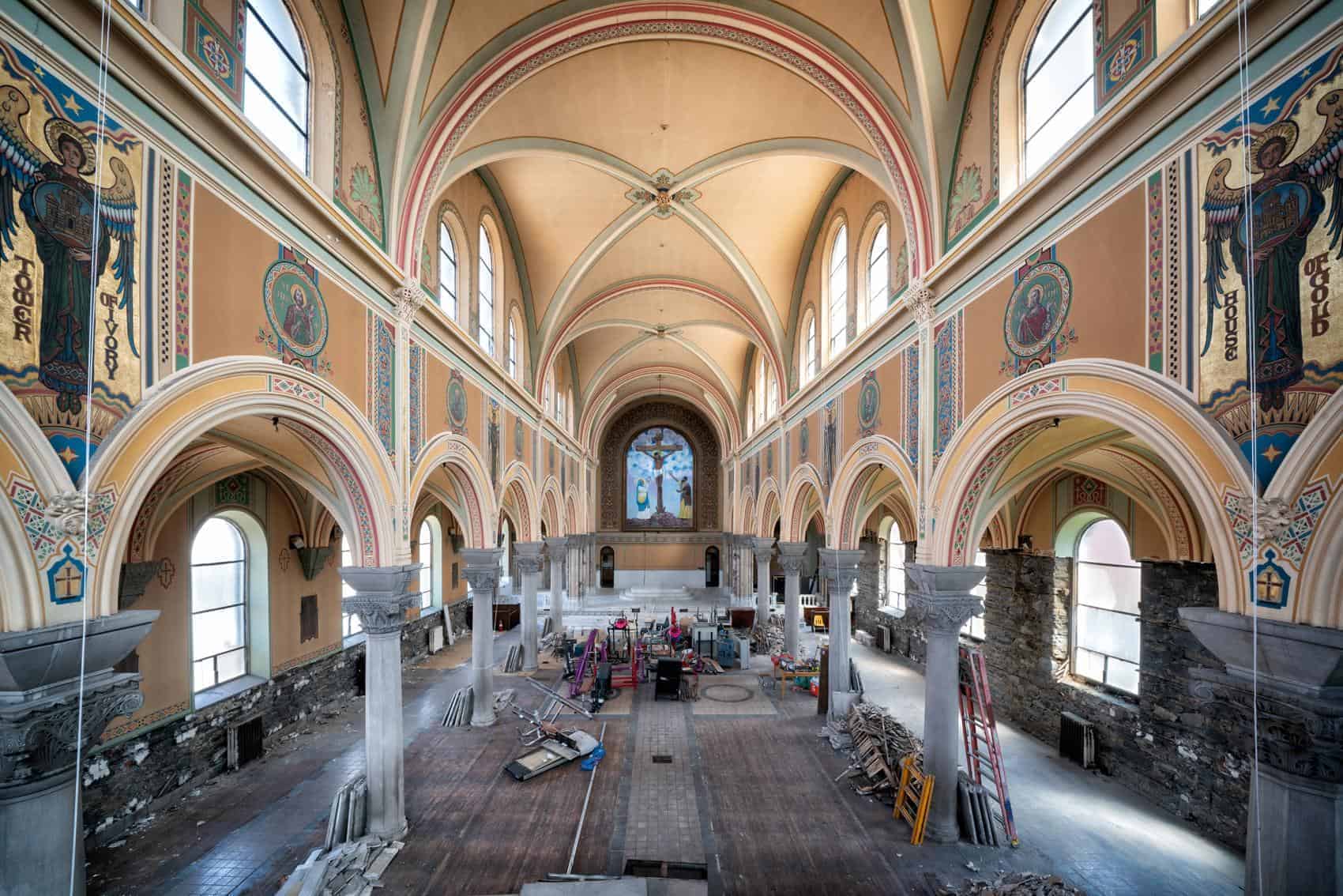Philadelphia’s Lost Landmarks: A Journey Through 6 Abandoned Churches

Once vibrant symbols of faith and community, many of Philadelphia’s historic churches now stand abandoned—haunting relics of a city in transformation.
Philadelphia, a city known for its rich history and architectural diversity, is home to a number of stunning churches that have long stood as symbols of faith and community. However, in recent decades, many of these once-thriving places of worship have fallen into disrepair and abandonment. From the grandiose structures of the 19th century to mid-century modern sanctuaries, these churches now stand as eerie reminders of changing demographics, economic decline, and shifting social landscapes.
In some cases, the churches have been repurposed, but more often they are destroyed. Let’s take a closer look at six abandoned churches – through their crumbling facades and empty pews, each one offers a unique glimpse into the city’s past and the challenges faced by historic architecture in a rapidly evolving urban landscape. If you’d like to explore more of one of the churches, click the title to see the rest!
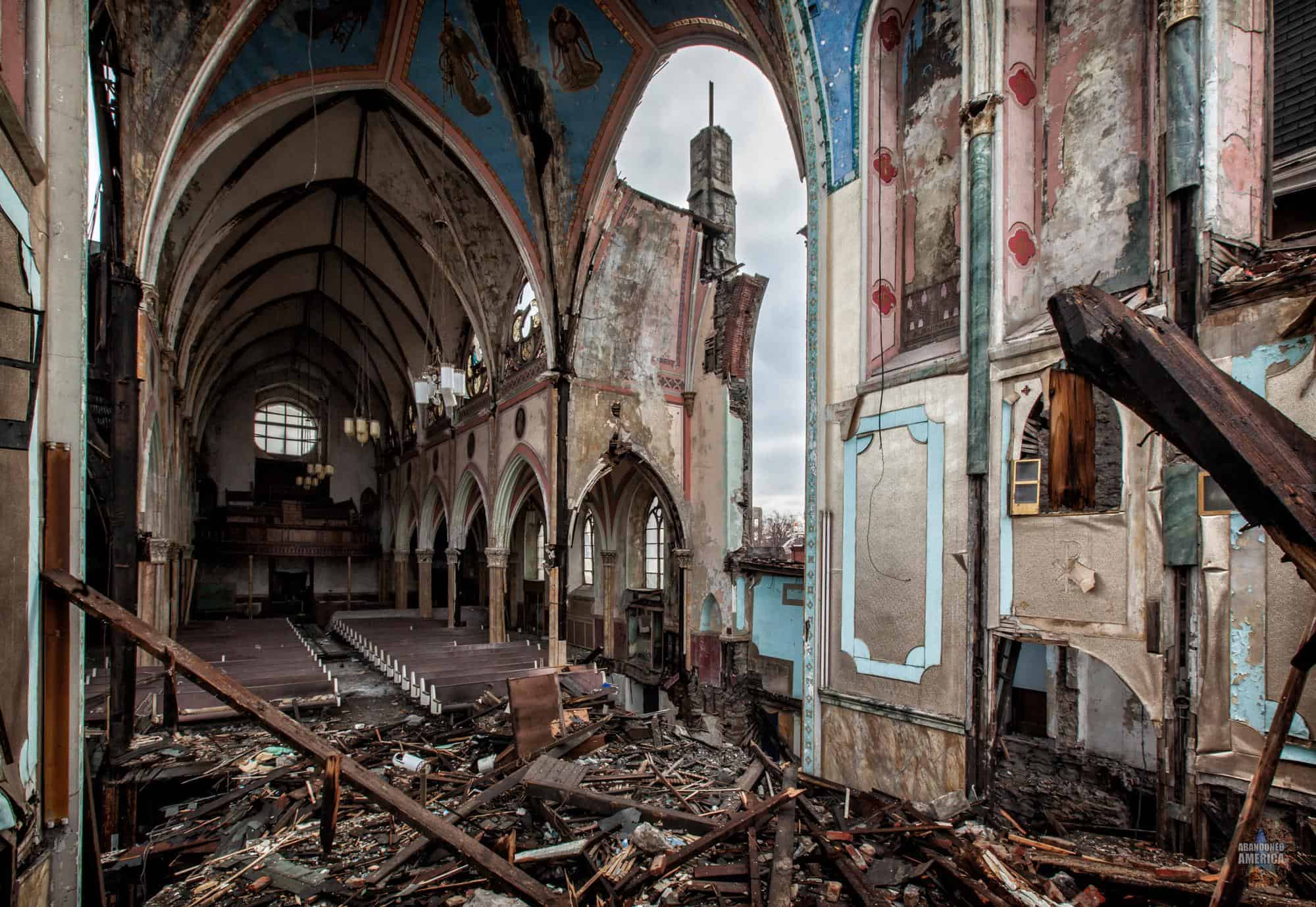
St. Bonaventure
St. Bonaventure Roman Catholic Church, located in Philadelphia’s Fairhill neighborhood, was designed in 1894 by architect Edwin Forrest Durang, known for his Roman Baroque style. The church served a large German Catholic immigrant community, many of whom had come to the area for work in local industries such as iron foundries, textile factories, and coal yards. Some immigrants also fled religious persecution in Germany. St. Bonaventure Parish was founded partly due to a local resident’s frustration with having to travel twelve blocks to the nearest German parish, St. Boniface.
The church closed in 1993, along with other North Philadelphia churches in declining, low-income areas. It was sold to the New Life Evangelistic Church, which allowed the building to deteriorate, with thefts of copper, windows, and plumbing. In 2013, the Department of Licensing and Inspections declared the church’s steeple at risk of collapse after damage from Hurricane Sandy. Rather than investing $77,000 to stabilize it, L&I chose to demolish the historic structure, spending around $1 million in taxpayer funds.
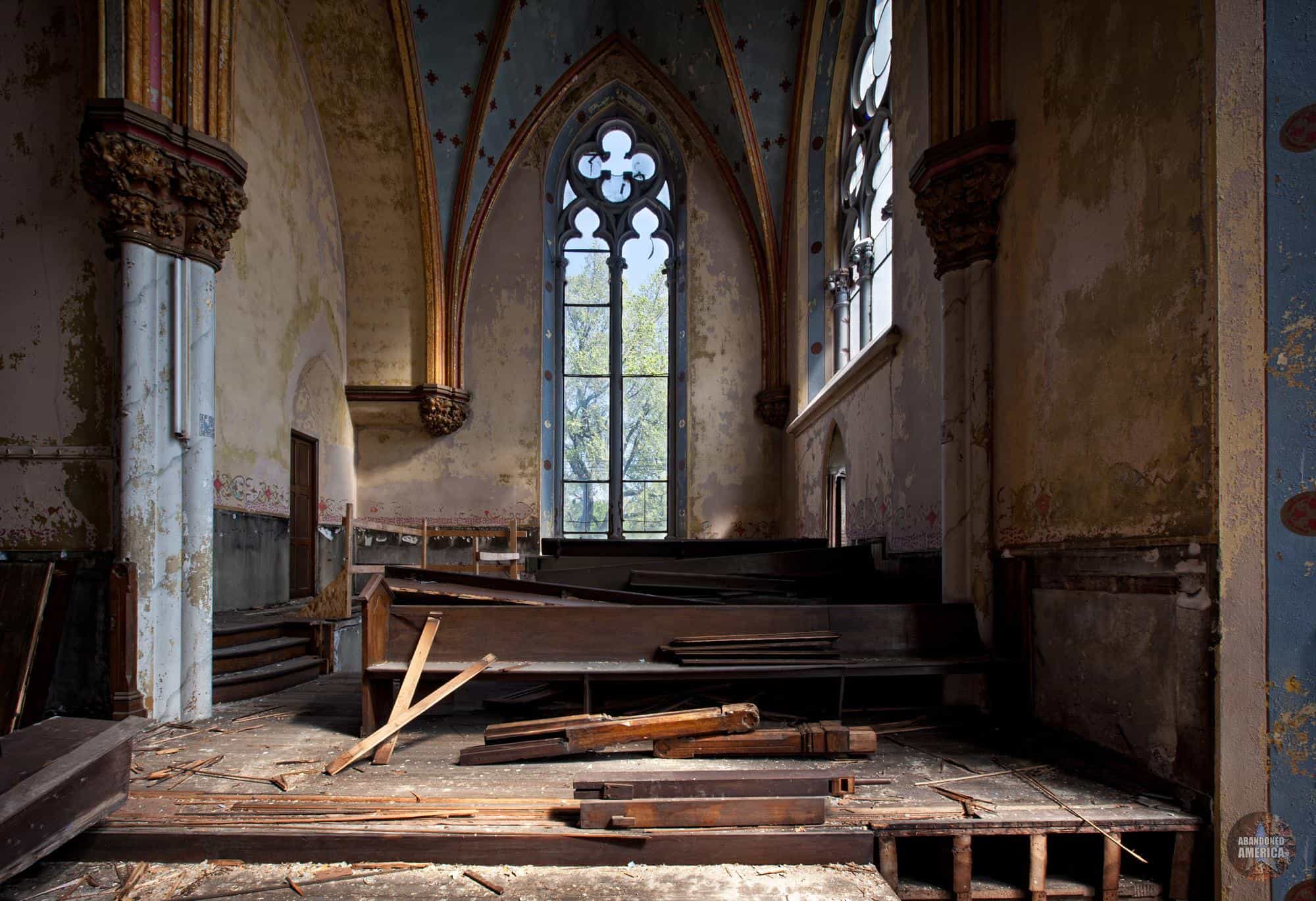
St. Boniface
St. Boniface Church’s history began with the founding of St. Peter’s Church in 1843 to serve German Catholics in West Kensington, Philadelphia. As the parish grew, a site was purchased in 1866 for a new church and school. The cornerstone for St. Boniface was laid in 1868, but due to financial difficulties, the church wasn’t dedicated until 1872. The parish’s struggles continued until the Archbishop appealed to Rome for help. Although the letter was damaged in a shipwreck, it was delivered, and the Archbishop’s request was granted. The Redemptorists, known for ministering to the poor, took over the church, and the Sisters at the school assisted by preparing meals for the priests.
Over time, the neighborhood’s demographics shifted, and the church’s congregation dwindled. Unable to afford costly repairs, including an estimated $7 million for restoration, St. Boniface closed in 2006. In 2012, a developer demolished the church to make way for new housing.
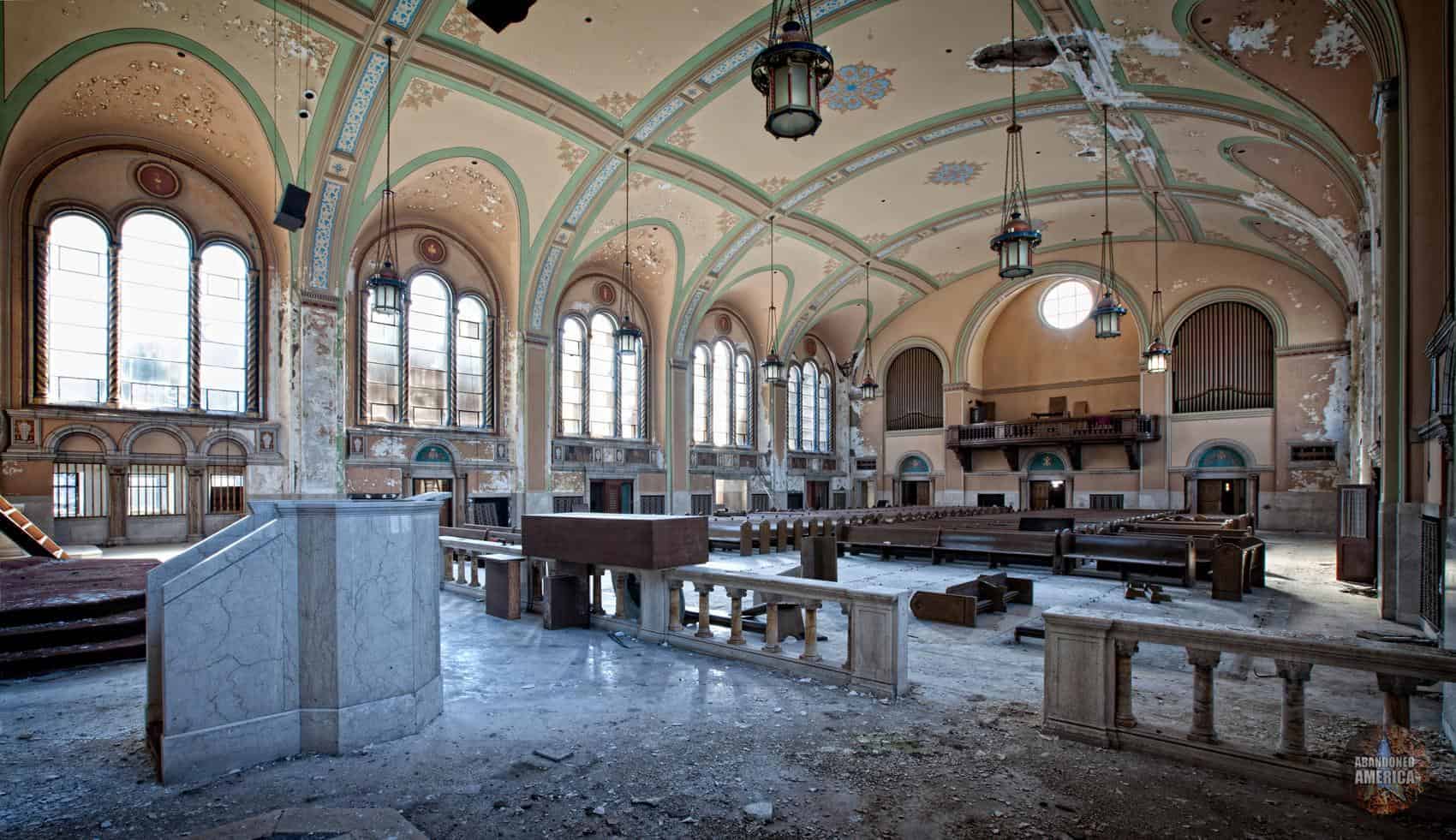
Ascension Church
The Ascension of Our Lord Parish was founded in 1899, initially holding services in a temporary chapel inside a former candy store. Construction of a permanent church began that year on land once used as a peach orchard, and the church was completed in 1900 for $75,000, serving 1,100 parishioners. As the congregation grew, plans for a larger church were made, and the basement chapel was finished in 1914. However, due to economic struggles and World War I, construction of the upper church was delayed, with the building completed in 1926 and the interior finalized in 1928.
By 1922, Ascension was the third-largest parish in Philadelphia. However, by the 1980s, as poverty in the area rose, the church and neighborhood began to decline. With $3 million in needed repairs and attendance down to 188, Ascension closed in 2012. By 2017, the church had become a center for drug activity, and in December of that year, it burned down. The blackened, abandoned building remains as a symbol of the neighborhood’s decay.
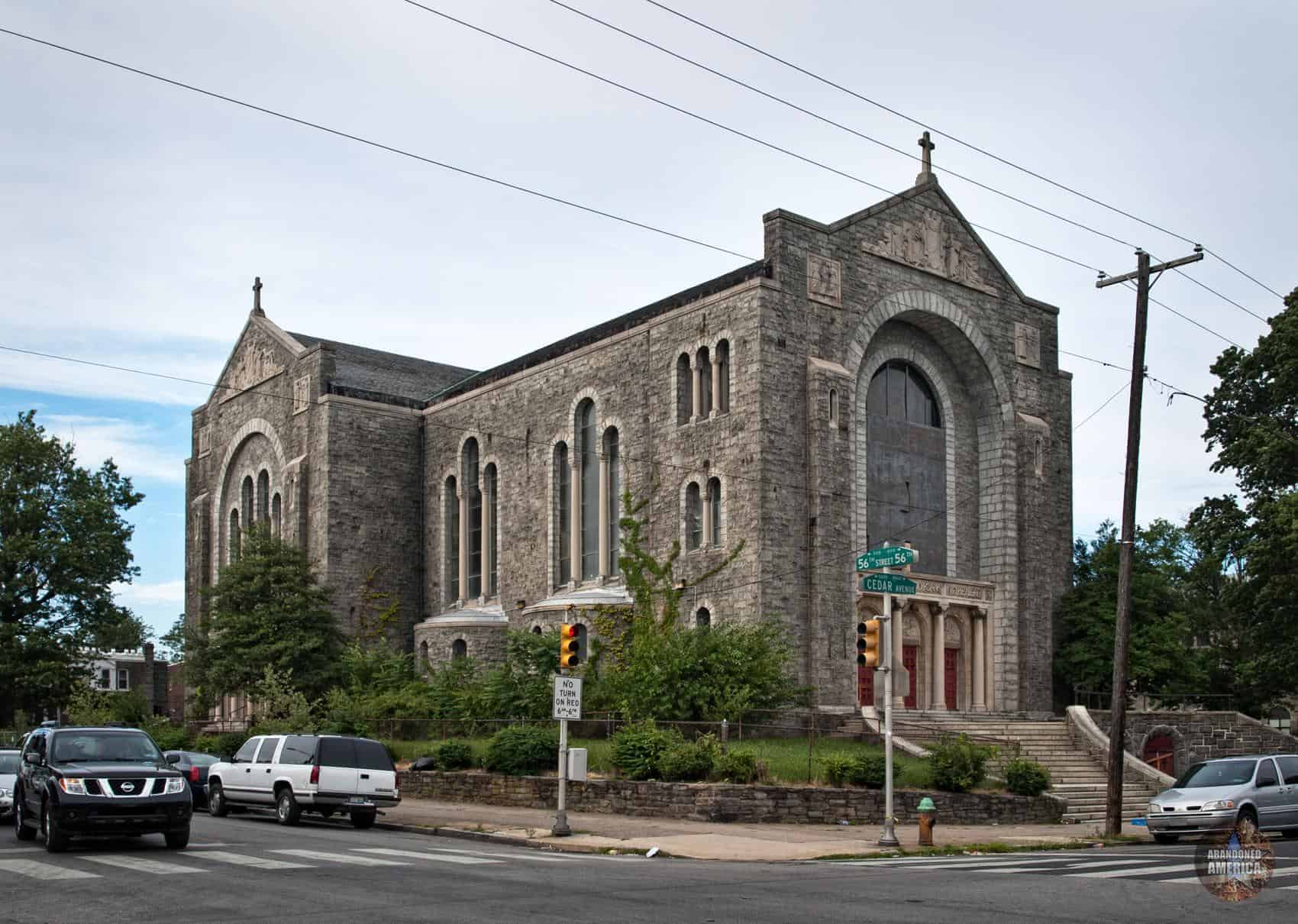
Church of the Transfiguration
The Church of the Transfiguration was originally a small wooden chapel built in 1905 on farmland. As the parish grew, a new church was constructed, with the lower church completed in 1925 and the upper church finished in 1928. Seating over 2,500 people, it became one of Philadelphia’s largest and most impressive churches. However, by the 1970s, neighborhood demographics shifted, and the church was closed in 2000.
The church was later purchased by Raffaello Follieri, a con artist who falsely claimed to have connections within the Vatican to buy churches at low prices and convert them into community centers. Instead, he misused investor funds to fund a lavish lifestyle with actress Anne Hathaway. After his conviction and imprisonment, Transfiguration was resold in 2009 to Boys’ Latin of Philadelphia Charter School, which demolished the church and rectory to make way for the school, doing so quickly to avoid community opposition.
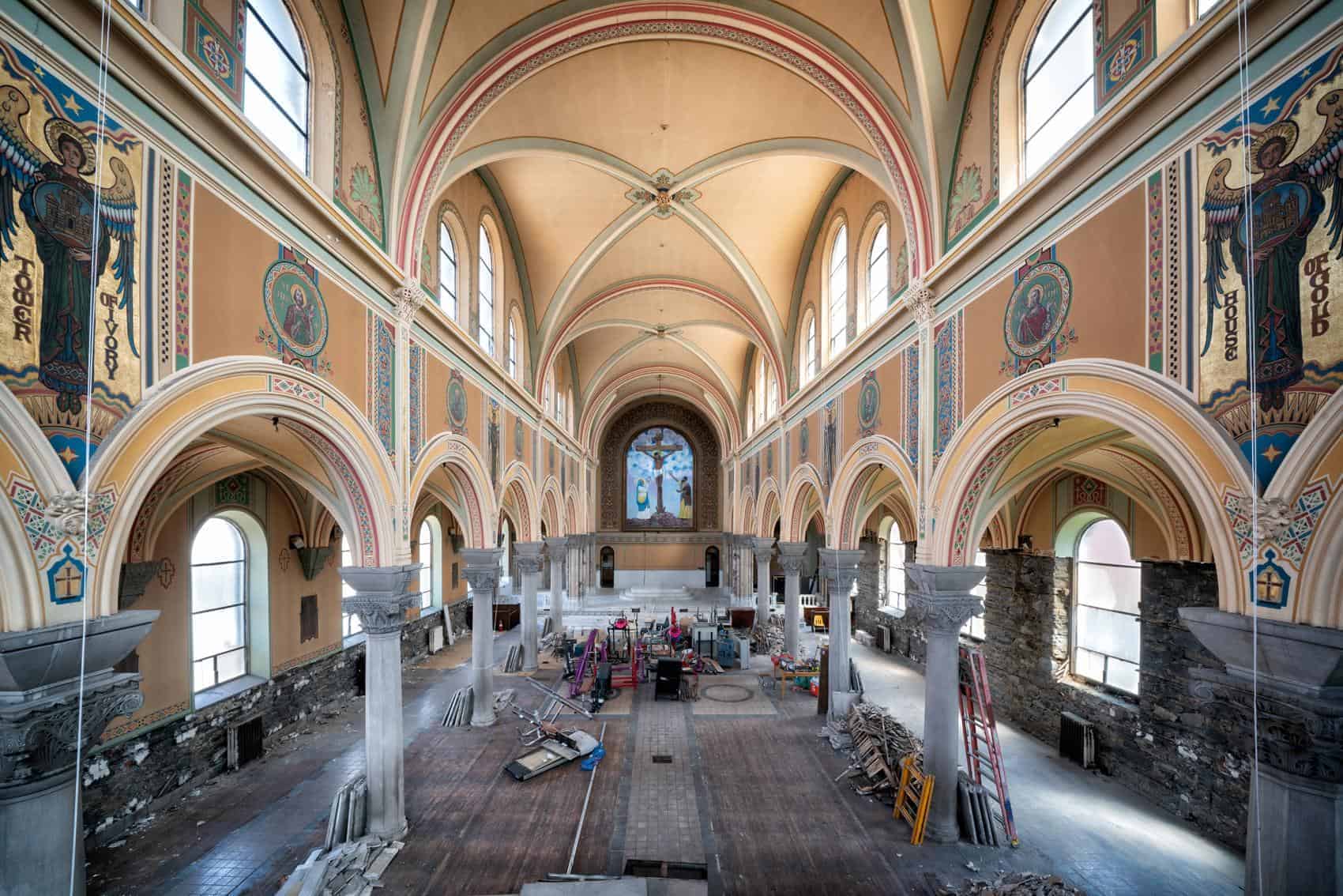
Our Lady of the Blessed Sacrament
Our Lady of the Blessed Sacrament was originally founded as Our Lady of the Rosary Church in 1888, emerging from the nearby Our Mother of Sorrows parish. The cornerstone ceremony drew over 1,000 attendees, including church bands and temperance societies. Inside the cornerstone were coins, medals, and local newspapers. The church was completed and dedicated in 1890, with a procession of 4,000 children marching through the streets afterward. Described as the “prettiest little church in Philadelphia,” the Romanesque Revival building, designed by Frank Rushmore Watson, seated 1,000 parishioners and featured locally quarried stone, granite trimmings, antique oak interiors, and stained glass windows depicting the rosary.
By 1996, after merging with Our Lady of Victory, the parish had a predominantly African and Caribbean American congregation. In 2013, it merged again with St. Cyprian Parish, but financial struggles led to its closure in 2014. In 2021, despite community opposition, the church was demolished, leaving only an empty lot where it once stood.
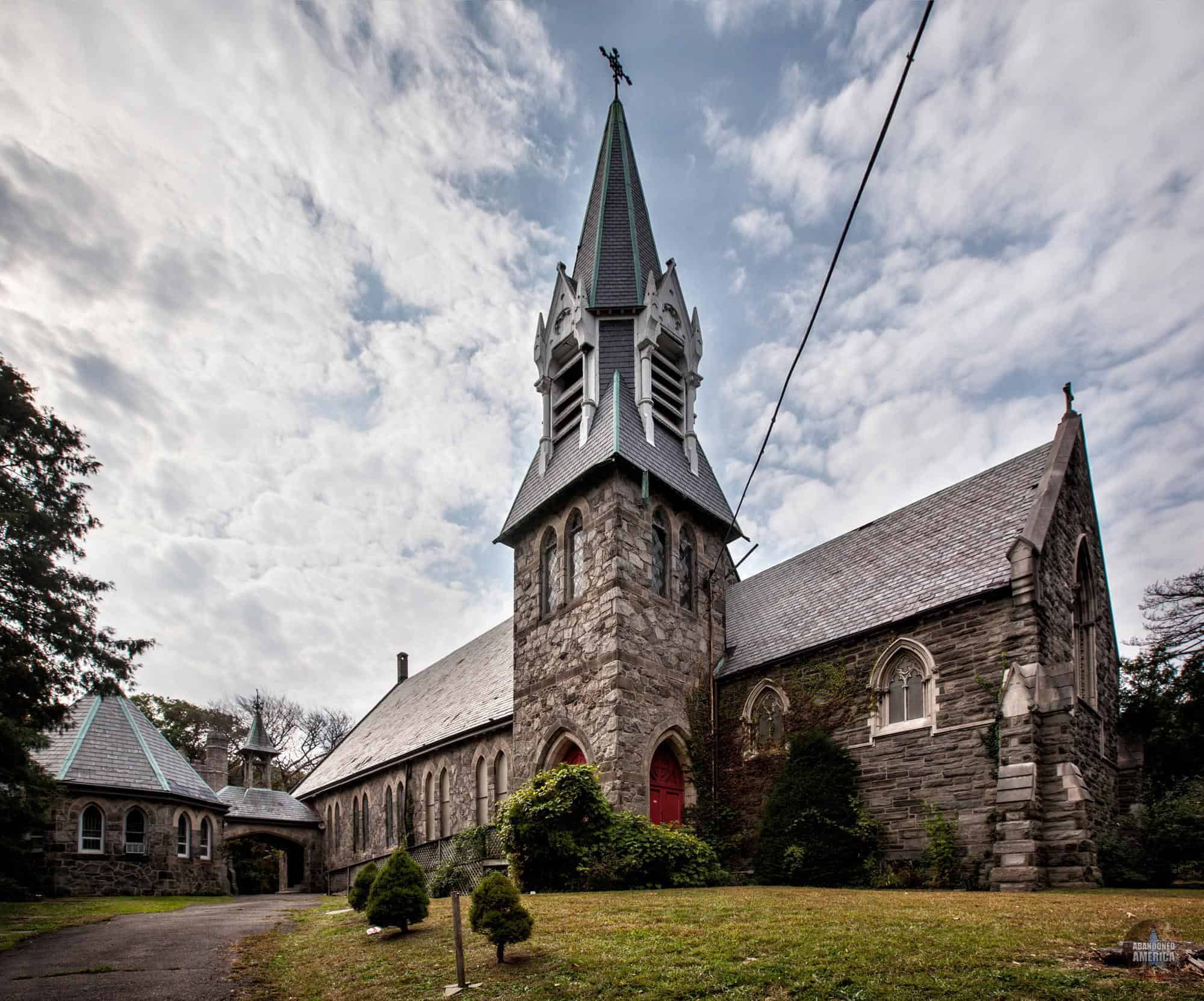
St. Peter’s Episcopal Church
St. Peter’s Episcopal Church of Germantown was built between 1873 and 1883 for Henry Howard Houston, the Vice President of the Pennsylvania Railroad, as part of his plan to attract wealthy residents to the area. Designed by prominent architects Frank Furness and George Hewitt, the church features a blend of Gothic and high Victorian styles. The parish house, added in 1898 by Theophilus P. Chandler Jr., completed the complex. It’s rumored that poet Walt Whitman visited the church.
However, declining membership led to the church’s closure in 2005. The buildings, listed on the National Register of Historic Places, housed valuable treasures, including Tiffany stained glass windows and works by muralist Violet Oakley. After its closure, these were moved to the Pennsylvania Academy of Fine Arts, and the church’s organ was relocated.
Unlike the other churches on this list, the story of St. Peter’s had a happy ending! In 2013, developer Ken Weinstein and the Waldorf School revitalized the property, preserving its historic character while adapting it for modern use—proof that historic church buildings in Philadelphia can still serve their communities.
Plan Your Trip
Philadelphia Historical Experiences
Travel Tips
- Access: Many of these churches are located in urban neighborhoods—explore during daylight hours and respect private property
- Photography: Bring a zoom lens or camera with good low-light performance—exteriors often have beautiful, intricate details
- Season: Fall and spring offer the best weather for walking tours and photography without the summer crowds or winter chill
- Safety: While exploring abandoned areas can be compelling, always prioritize safety and avoid entering unsecured buildings
- Alternatives: For safe, guided exploration of Philadelphia’s religious architecture, visit still-active historic churches like St. Augustine or the Cathedral Basilica of Saints Peter and Paul
Historical Note
Philadelphia’s abandoned churches reflect over a century of shifting immigration patterns, industrial decline, and evolving urban landscapes. Once vital centers of immigrant faith communities, these now-crumbling sanctuaries stand as poignant reminders of the city’s complex social and architectural past.
While some have been saved or repurposed, many more have vanished—lost to neglect, economic hardship, or controversial development—challenging us to reconsider how we preserve sacred spaces in a changing city.
